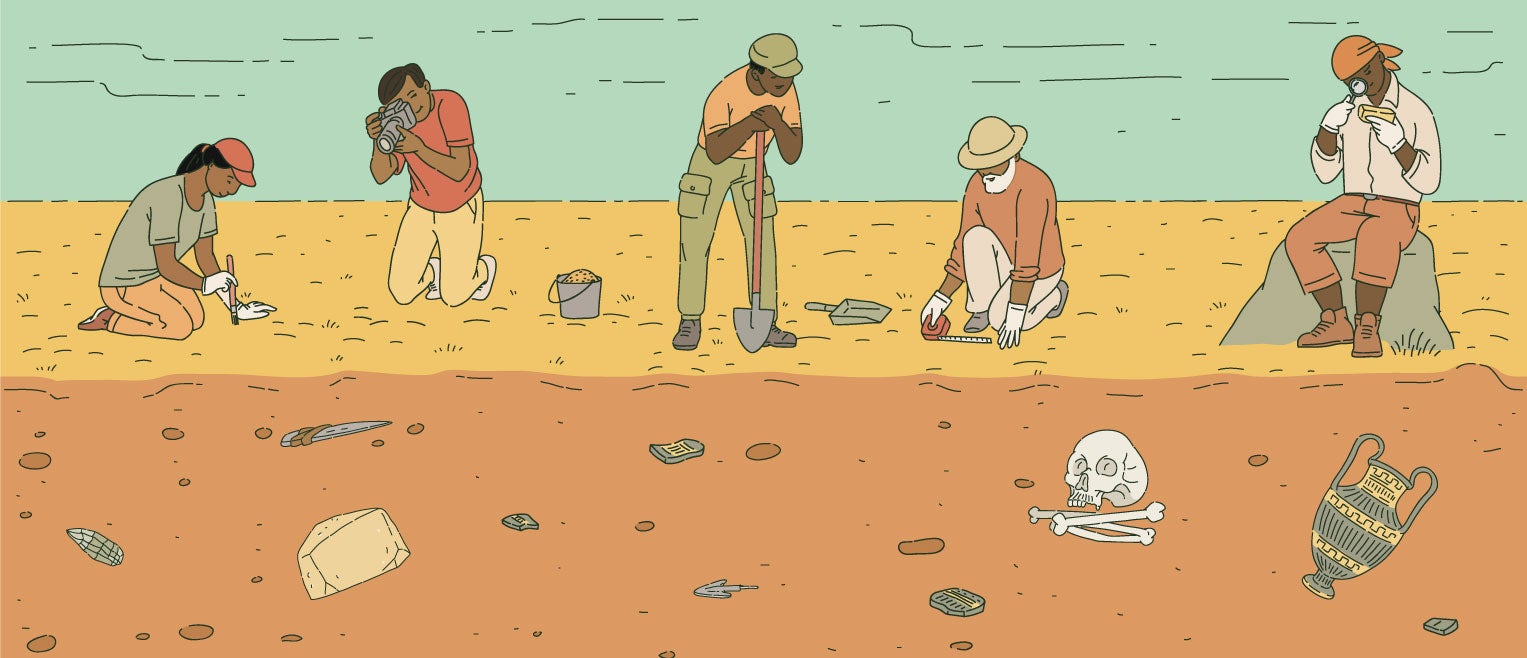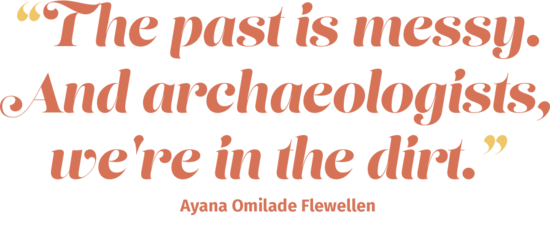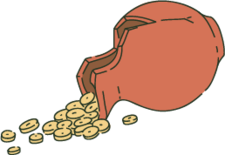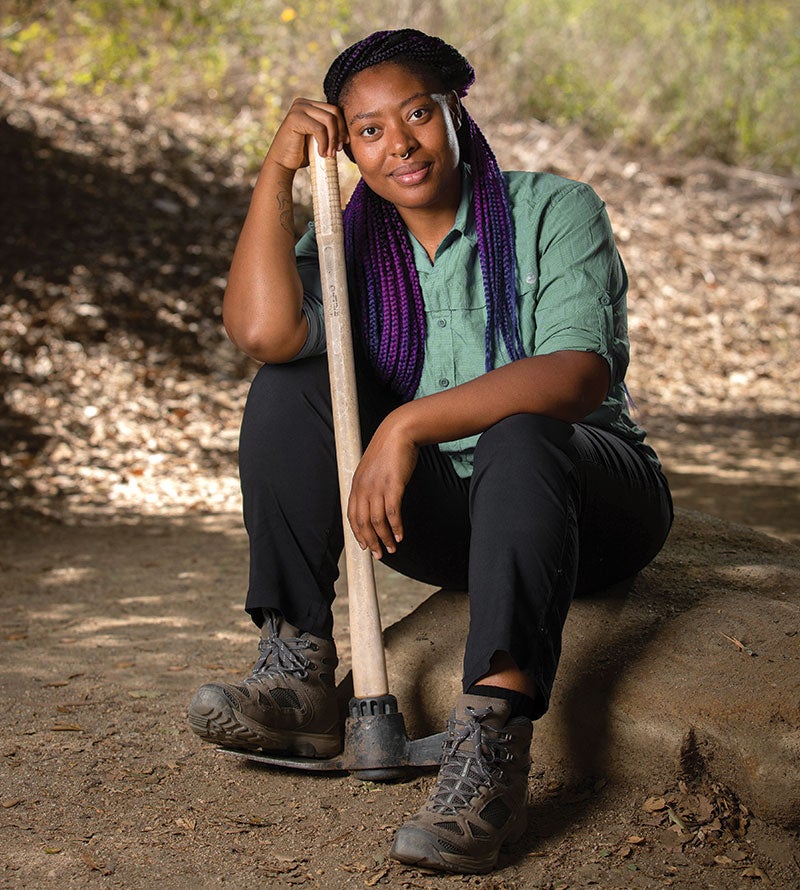MONUMENTAL CHANGE
How the toppling of Confederate monuments
could create more Black archaeologists.
By Holly Ober
hen many Americans imagine an archaeologist, they probably picture someone who looks like Indiana Jones or Lara Croft from “Tomb Raider” digging up the spoils of a vanished culture in colonized lands. Depictions of archaeologists in popular culture mirror reality. Many scholars have noted the experts institutions recognize as authorities to discuss or represent the past are overwhelmingly white and mostly male. In fact, a Black woman did not receive a doctoral degree in archaeology until 1980. Ayana Omilade Flewellen, an assistant professor of anthropology at UCR and co-founder of the Society of Black Archaeologists, is working to change this by investigating anti-Blackness within the discipline, increasing the visibility of Black archaeologists, changing how archaeologists are portrayed in the media, and developing strategies to get more Black students to study archaeology.
“Public-facing avenues for history-making have historically excluded Black and brown people,” Flewellen said. “It has been white, extracting value from and not in dialogue with surrounding communities. How can we be part of history-making? How can we get more excluded communities engaged in this work?”
Flewellen and colleagues wrote a paper published earlier this year in the journal American Antiquity urging archaeologists and history professionals to work closely with people who are grappling with racism in public monuments and institutional names in the wake of last year’s uprising following the murder of George Floyd. The authors argue that by working with “broad publics who are actively dictating what should be preserved and what should not, the field can begin to redress the harm it has perpetuated.”
For example, the authors suggest monuments damaged by protestors could be preserved and displayed alongside exhibits contextualizing the damage as part of a broader history that includes the oppression and struggle for equality of Black and Indigenous peoples in America. Defacing or destroying monuments, such as those of Confederate military officers, could be seen not as an attempt to erase history but as part of an active process of making history. The paper adds recognizing acts of Black resistance against such monuments and other markers of white supremacy makes for a more objective, inclusive, and human telling of history, shifting attention from a preoccupation with preservation toward critical examination of the histories scholars choose to see, excavate, and steward.
Ayana Omilade Flewellen, an assistant professor of anthropology. (UCR/Stan Lim)
“The past is messy,” Flewellen said. “And archaeologists, we’re in the dirt.”
Flewellen and co. also address the challenges of bringing more Black college students into archaeology, which, in America, is a discipline usually housed in anthropology departments.
“Many Black students don’t even have access,” Flewellen said. “Historically, Black colleges and universities don’t usually have anthropology majors, and there are financial barriers as well. Field schools necessary to complete training are expensive, and because there are so few Black archaeologists, it’s also hard for Black students to find mentors.”
The authors argue Black archaeology, a specialization shaped by Black feminist theory focusing on Africa and the African diaspora, can help bring more Black people, especially women, into archaeology and work against racism in the discipline.
“An anti-racist archaeology is committed to forging sustainable and nurturing connections among archaeologists of all backgrounds, as well as with communities impacted by archaeological work, community organizers and activists, and those working with smaller historical societies that are also fighting to preserve local histories,” the authors wrote.





